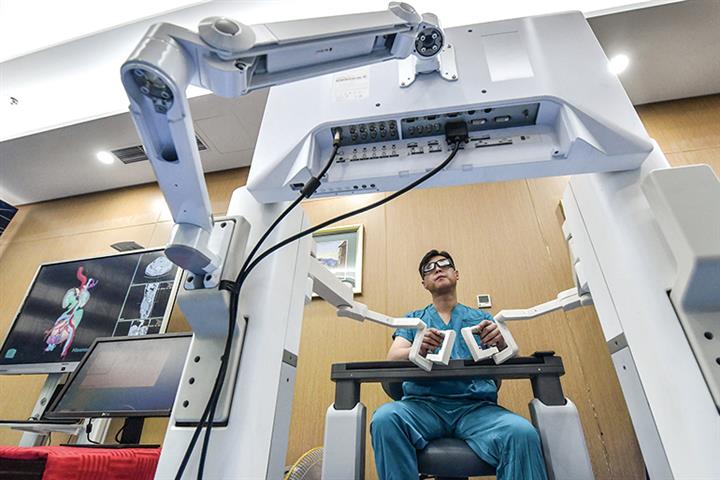 Chinese Surgical Robot Developer Tinavi Reports 41% Drop in Annual Revenue
Chinese Surgical Robot Developer Tinavi Reports 41% Drop in Annual Revenue(Yicai Global) April 12 -- Tinavi Medical Technologies, a Chinese developer of orthopedic surgical robots, said revenue fell 41 percent last year mainly because medical institutions were preoccupied with dealing with the coronavirus contagion. The firm’s shares fell.
Revenue came in at CNY136 million (USD20.8 million) in the 12 months ended Dec. 31, according to the Beijing-based company’s earnings report published on April 10.
The clinical application of Tinavi’s main product, the orthopedic surgical navigation and positioning robot, is in the early stages of marketing. A sharp drop in revenue from direct sales was the main reason for the decline in the company’s operating income during the reporting period, China Securities said in a report on April 10.
Industry insiders are not surprised that Tinavi’s performance has not improved quickly since it listed. They believe that a series of factors, such as low market awareness, is restricting the use of surgical robots in China, so it will take time for suppliers to become profitable.
Tinavi Medical was the first domestic maker of surgical robots to join the Nasdaq-style Star Market last July. The initial public offering was priced at CNY12.04 (USD1.84) a share. Tinavi’s stock price [SHA: 688277] closed 3 percent lower today at CNY30.63. The broader Shanghai Composite Index fell 1.1 percent.
Surgical Needs
The main problem is probably that most surgical robots are demonstrated based on foreign clinical needs and technical solutions, which does not completely meet the needs of surgeons in China, Qi Peng, a medical robotics researcher at Tongji University, told Yicai Global. That requires concerted efforts by the engineering and medical communities, Qi said, adding that high prices are another obstacle.
Product standards, regulations and policies are also bottlenecks in the development of the industry, according to Pu Zhengrong, vice president of advanced therapies at Siemens Healthineers Greater China.
As a new type of innovative technology product, surgical robots require time and more data to secure regulatory approval, Pu told Yicai Global. On the other hand, it is hoped that regulators can work with businesses and experts to set product access standards as soon as possible.
Industry forecasts suggest the global market for surgical robots will be worth USD10 billion by 2027, with more than a quarter of sales coming from China. Over the past few years, more than 30 medical device startups dealing in such robots have been financed in China.
Editor: Peter Thomas